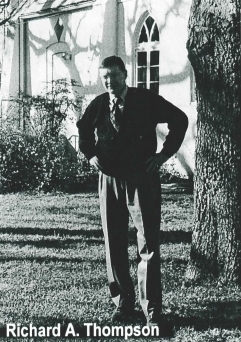Foreword
Richard A. Thompson, Editor
The celebration of the Centennial of the Hancock Golf Course in 1999 is a fitting occasion for producing a history of the area through the sponsorship of the Hancock Neighborhood Association (H. N. A.). The purpose is to provide a record for the future and to foster community building in the present. The title was chosen by the History Committee to reflect the experience of those who live in the area bounded by 32nd Street to the south, 45th street to the north, Duval Street to the west and Interstate 35 (I-35) to the east. This near-north side of Austin is urbane because of its proximity to Austin's downtown, to the State Capitol, and to the University of Texas, with residents both contributing to and benefiting from the social and cultural resources of that environment. Yet in the midst of the region's explosive growth, there is an ambiance and tranquility in the vicinity, which has been a blessing to residents over the decades.
This theme is developed throughout the Overview of the Hancock's area past, as well as through the four topical essays. Besides my taking the lead in writing the Overview, others have added much to the section. Geologist Charles Woodruff Jr. provided important information, with Jon Kalb, drawing the geological map of the area. Else Plumb Kidd prepared the portion on The Oak Lawn Addition & Ideal Place, and David Orr on the 1920-1945 era. Barbara A. Manz made particular input about Concordia University.
The topical essays have been written by others on the History Committee. The one on architecture is by Professor Emeritus of Architecture at the University of Texas Blake Alexander. Neighborhood residents wrote the other essays including the one on the Hancock Golf Course by John Ramzy, and on the Hancock Shopping Photo of Richard A. Thompson Center by Jalaane Levi-Garza and Louis Pauls. John Brodie is author of the essay on Beau—Site: A Case Study, in which the recounting of properly owners, deed restrictions/conditions, and changing of street names within one neighborhood affords a crossrsectional view across the decades. John has also worked with me to edit the entire text and has performed the yoeman job of word-processing the material.
We are indebted to the Austin History Center for the use of maps of the 1840s and of the early 20th century Hancock neighborhood maps. We are grateful to the Hancock Recreation Center for use of photos and drawings pertaining to the golf course. Daniel Garza photographed and contributed images of area homes and buildings.

It is through this cooperative effort, plus the financial support of those listed as contributors that this volume has been made possible. May those living in this community now and in the future better appreciate through these pages how the Hancock Neighborhood is indeed an urbane oasis and how it is worthy of all preservation efforts, historical and otherwise.
- Printer-friendly version
- Login to post comments
- 2480 reads